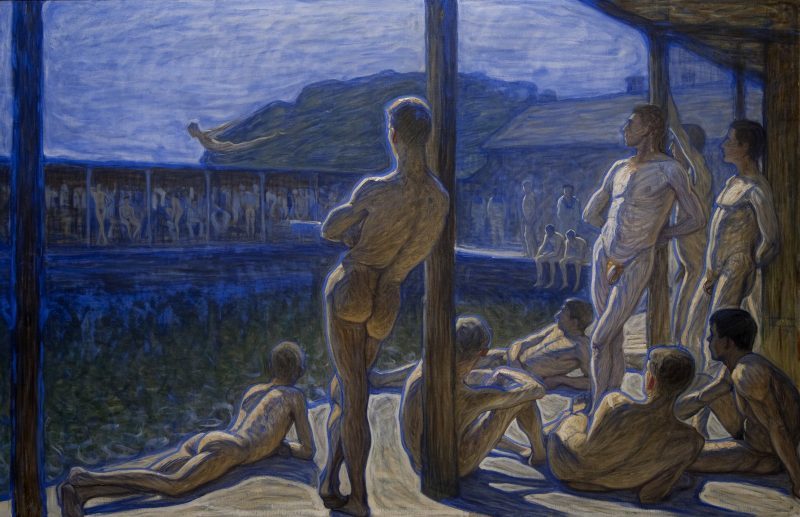Men at water. Jan Hietala and Eugène Jansson in dialogue
Men bathing is a subject that has attracted attention throughout art history. Bodies moving or at rest, and nude bathing with its oscillation between social and private situations, provide new opportunities to observe the naked male body. Bathing houses and spontaneous outdoor bathing have inspired artists at least since the late 19th century to portray both the hygienic benefits, the liberated playfulness and the erotic allure of water.
The artist Jan Hietala has long devoted himself to an exploration of this artistic tradition through a variety of media: painting, films, text and installations. Therefore, he has been invited to show a selection of his works and give a contemporary perspective on one of the Thiel Gallery’s most eye-catching paintings: The Navy Bath House (1907) by Eugène Jansson (1862-1915).
Jansson belonged to the close circle of artist friends of the collector Ernest Thiel, and his paintings commanded an entire wall in the upstairs gallery. Since 1970, when it became known that Jansson was homosexual, The Navy Bath House has been tucked away in the Gallery’s warehouse and only shown in temporary exhibitions. This exhibition marks the fact that the nude men will now be on permanent display at the Thiel Gallery.
The exhibition explores Hietala’s and Jansson’s shared interest in naked men and creative processes, based on their spiritual kinship. When an artist chooses a kindred spirit, that is, a likeminded person, they define their own kinship, their family. Through Hietala’s works we can look at Jansson with new eyes.
Many of Hietala’s works have never been shown in Sweden, and a few of them were actually created on the Thiel Gallery premises. The texts accompanying the exhibition were written by the artist, thereby enhancing the personal perspective.
Welcome to a sensual exhibition about nude men by the water, in the past and present.

